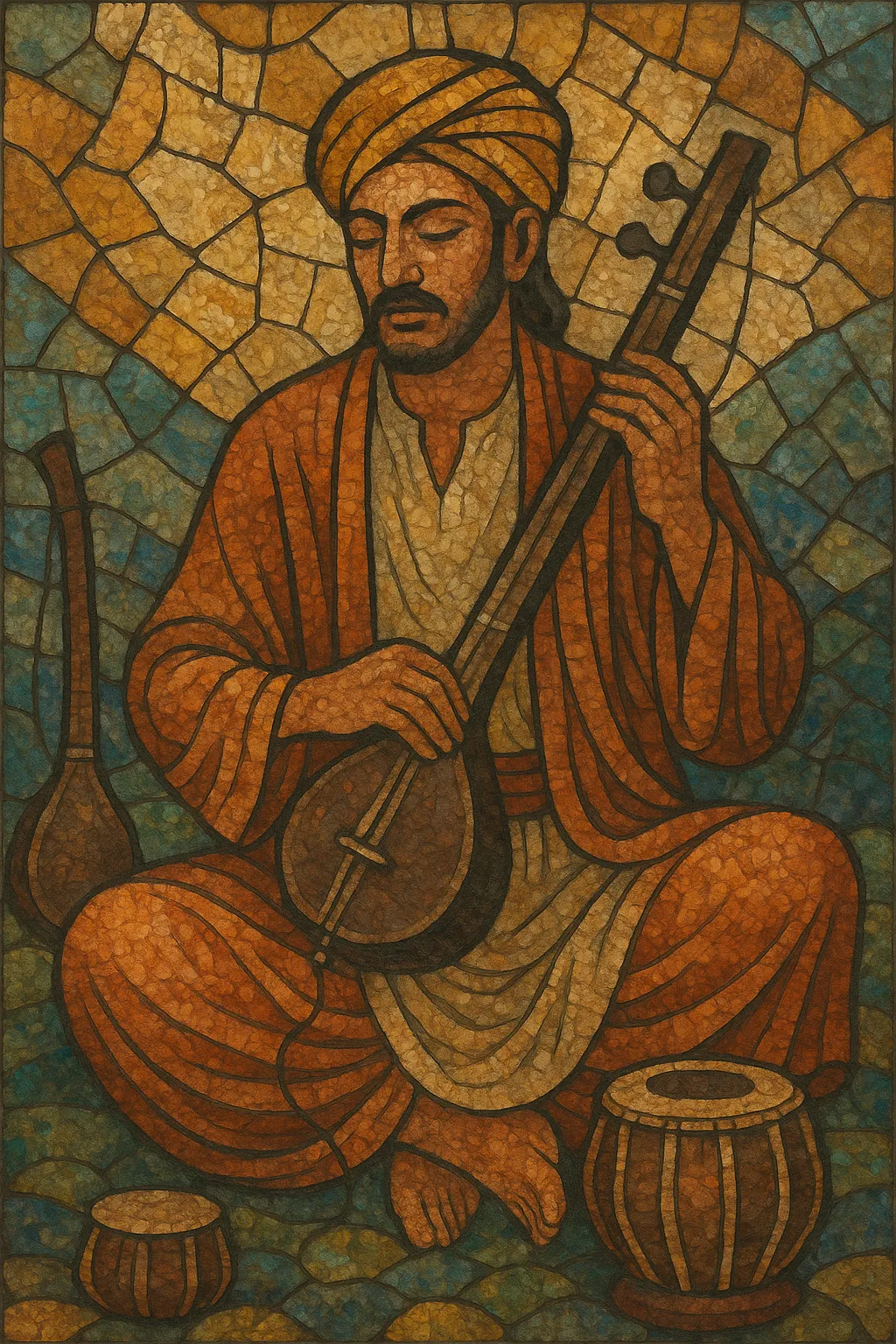Kafi is a Sufi-derived poetic–musical form from Punjab and Sindh, today largely associated with Pakistan. It sets short, gnomic devotional poems to melodic frameworks from the Hindustani tradition and regional folk modes, focusing on mystical love, moral insight, and union with the Divine.
As a performance style, Kafi is semi-classical: it blends raga-based melodies and alap-like improvisation with accessible folk rhythms and strophic refrains (often labeled “rahau”). Typical accompaniments include harmonium, tabla or dholak, tanpura drone, and sometimes sarangi or the single-stringed iktara, supporting an emotive, ornamented lead vocal.
Kafi emerged as a distinct poetic and singing form in the Punjab–Sindh cultural sphere. Early exemplars are found in the works of Sufi mystic-poets such as Shah Hussain (16th century), Bulleh Shah, Sachal Sarmast, and Shah Abdul Latif Bhittai (17th–18th centuries). Their concise, aphoristic poems—often allegories of the soul’s longing—were sung in regional melodic modes and in Hindustani ragas, establishing a devotional practice outside courtly classical settings.
“Kafi” refers both to the poem and its musical rendering. Texts are typically short, strophic lyrics with a refrain (rahau) that centers the piece’s theme. Musically, performers draw on raga frameworks (commonly Kafi, Bhairavi, Sindhi variants) while keeping a folk-forward delivery. The approach is semi-classical: an unmetered opening (alap-like) may lead into cyclic talas such as Dadra (6) or Keherwa (8), with expressive meend, murki, and melismatic lines.
In the 20th century, radio and state cultural institutions in Pakistan amplified Kafi performance beyond shrine and mehfil contexts. Singers like Pathanay Khan and Suraiya Multanikar popularized Punjabi kafis; Allan Fakir brought Sindhi Kafi to national attention. The idiom’s hybrid of classical nuance and folk clarity made it ideal for broadcast, archiving, and concert stages.
From the late 20th century onward, Abida Parveen and later artists such as Sanam Marvi and Saieen Zahoor carried Kafi to international audiences, sometimes fusing it with amplified ensembles. The genre’s lyrical core continues to influence qawwali repertoires, ghazal renditions of Kafi texts, and modern “Sufi rock,” ensuring Kafi’s presence across devotional, popular, and world-music circuits.
Select a Kafi poem by Sufi poets such as Bulleh Shah, Shah Abdul Latif Bhittai, Shah Hussain, or Sachal Sarmast. Keep the refrain (rahau) as the thematic anchor and structure verses (antaras) around it.
Pick a suitable raga or mode (commonly Kafi, Bhairavi, or Sindhi variants). Outline the scale with an unmetered introduction (alap-like) to establish mood, then move to the main melody. Employ meend (glides), murki, and restrained taans for expression.
Use accessible folk/semi-classical cycles such as Dadra (6) or Keherwa (8). Start moderately slow so the text and emotion breathe; increase intensity gradually through dynamic expansion rather than speed alone.
Core setup: lead vocal, harmonium, tabla or dholak, and tanpura drone. Optional colors include sarangi, iktara, chimta, or a small chorus for refrains. Keep arrangements transparent so the poetry remains central.
Open with the refrain to state the central idea, then alternate verses with the refrain. Shape phrases to the text’s prosody; give space to key lines. Ornament sparingly but meaningfully, using sargam or brief taans to heighten cadences without overshadowing the lyric.
Allow call-and-response on the refrain, encourage gentle clapping in Keherwa/Dadra, and close by returning to the rahau. Maintain a devotional, inward tone even at climactic peaks.


